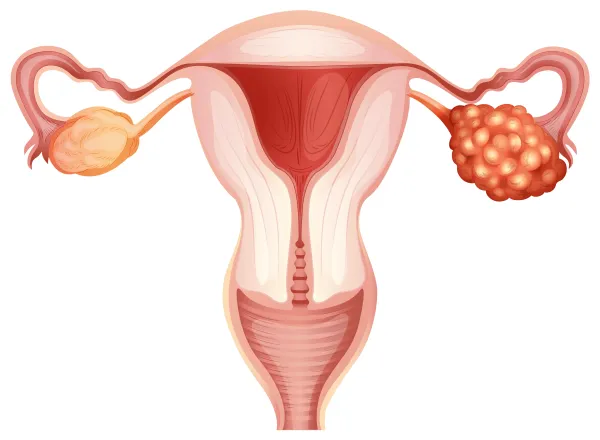ICD 10 Coding Alert
Spot the Right Codes for Malignant Neoplasms in the Cord, Cauda, and Cranial Nerves

Cauda equina malignancy has defined code though not all in cranial nerves have specific codes.
Having reported the ICD-10-CM codes for many months now, you would have identified the key codes that make routine for your practice. It is good to periodically review how you are submitting the diagnosis codes on claims. In this issue, we will reiterate the codes for malignant neoplasms in the spinal cord, cauda equina, and the cranial nerves.
Target C72.0 for Spinal Cord Tumors
When reporting a diagnosis of malignant neoplasm in the spinal cord, you submit the ICD-10-CM code C72.0 (Malignant neoplasm of spinal cord). This is a single simple code that leaves you little room for confusion.
Spinal cord vs. spinal meninges: Note that spinal cord and spinal meninges are not the same. These are two distinct anatomical structures and you have a distinct code for malignant neoplasms arising in the spinal meninges, i.e., C70.1 (Malignant neoplasm of spinal meninges).
Cauda Equina is not the Same as Spinal Cord
Cauda equina is not a nerve and is not same as the spinal cord. When your physician documents a diagnosis of malignant neoplasm in the tuft of nerves at the terminal end of the spinal cord, you should code C72.1 (Malignant neoplasm of cauda equina).
What is cauda equina? Cauda equina is the bundle of spinal nerves and spinal nerve roots that originate in the tip of the spinal cord. This bundle consists of nerve pairs that originate from second lumbar level to fifth sacral level, and the coccygeal nerve. This bundle has both sensory and motor nerves and supplies the pelvic organs, perineum, and lower limbs.
“Malignant tumors of the spinal cord and cauda equina are typically glioblastoma and malignant ependymoma respectively. Metastatic neoplasms can also be rarely seen,” says Gregory Przybylski, MD, director of neurosurgery, New Jersey Neuroscience Institute, JFK Medical Center, Edison. “Fortunately, most spinal cord neoplasms are benign, including astrocytoma and ependymoma.”
Spot the Specific Codes for 3 Cranial Nerves
CPT® has specific codes for neoplasms only in the cranial nerves I, II, and VIII, i.e. the olfactory, optic, and acoustic cranial nerves. The three code series for these cranial nerves are: C72.2 (Malignant neoplasm of olfactory nerve), C72.3 (Malignant neoplasm of optic nerve), and C72.4 (Malignant neoplasm of acoustic nerve).
Find the fifth character: For malignant neoplasms in the olfactory, optic, and acoustic cranial nerves, you should describe the fifth character depending upon the laterality of the neoplasm. Table 2 lists the codes for the right and left sided involvement of these cranial nerves. In addition, you have specific codes which you can submit when your physician does not specify the laterality of the neoplasm.
Code for Other Cranial Nerves
Your claims are not limited to only olfactory, optic, and acoustic cranial nerves. When your physician documents neoplasm in a cranial nerve other than these three nerves, you can prepare a claim with code C72.59 (Malignant neoplasm of other cranial nerves).
Don’t have a name or number for cranial nerve? When your physician does not document the name or number of the cranial nerve involved with the neoplasm, you submit CPT® code C72.50 (Malignant neoplasm of unspecified cranial nerve).
Related Articles
ICD 10 Coding Alert
- News You Can Use:
ICD-10 Glitch Causes CMS to Slacken PQRS Requirements
Don’t miss this CMS update. The transition from ICD-9 to ICD-10 has had its fair [...] - Coding Quiz:
Test Yourself With 5 Pap Test Scenarios
Distinguish reason for repeat Pap. When your lab performs Pap tests, do you know the [...] - Training:
Top 4 ICD-10 Coding Mistakes You Cannot Afford To Make
Don’t just correct, perfect your respiratory failure and seventh character coding. You have now entered [...] - Coding Quiz Answers:
Grade Your 5 Pap-Test Scenario Responses
Don’t confuse screening vs. diagnostic tests. After reading the questions on page 9, now is [...] - Oncology & Hematology:
Spot the Right Codes for Malignant Neoplasms in the Cord, Cauda, and Cranial Nerves
Cauda equina malignancy has defined code though not all in cranial nerves have specific codes. [...] - Orthopedics:
Straining to Find a Neck Sprain Code? Here are Your Options
Watch out: Careful of what seventh character you apply. Neck sprain means that the patient [...] - Reader Question:
Don't Be Surprised By Some CMS ICD-10 Denials
Question: Are other coders receiving denials fora PSA claim after 10/1/2016 for using the new ICD-10 [...] - Reader Question:
Get Specific with Pharyngitis Code Choice
Question: When our otolaryngologist diagnoses acute pharyngitis, how should I choose an ICD-10 code for the [...] - Reader Question:
Look Beyond E/M for Nursemaid's Elbow
Question: Which code applies to nursemaid’s elbow treatment? Our pediatrician just marked an E/M code but [...]




